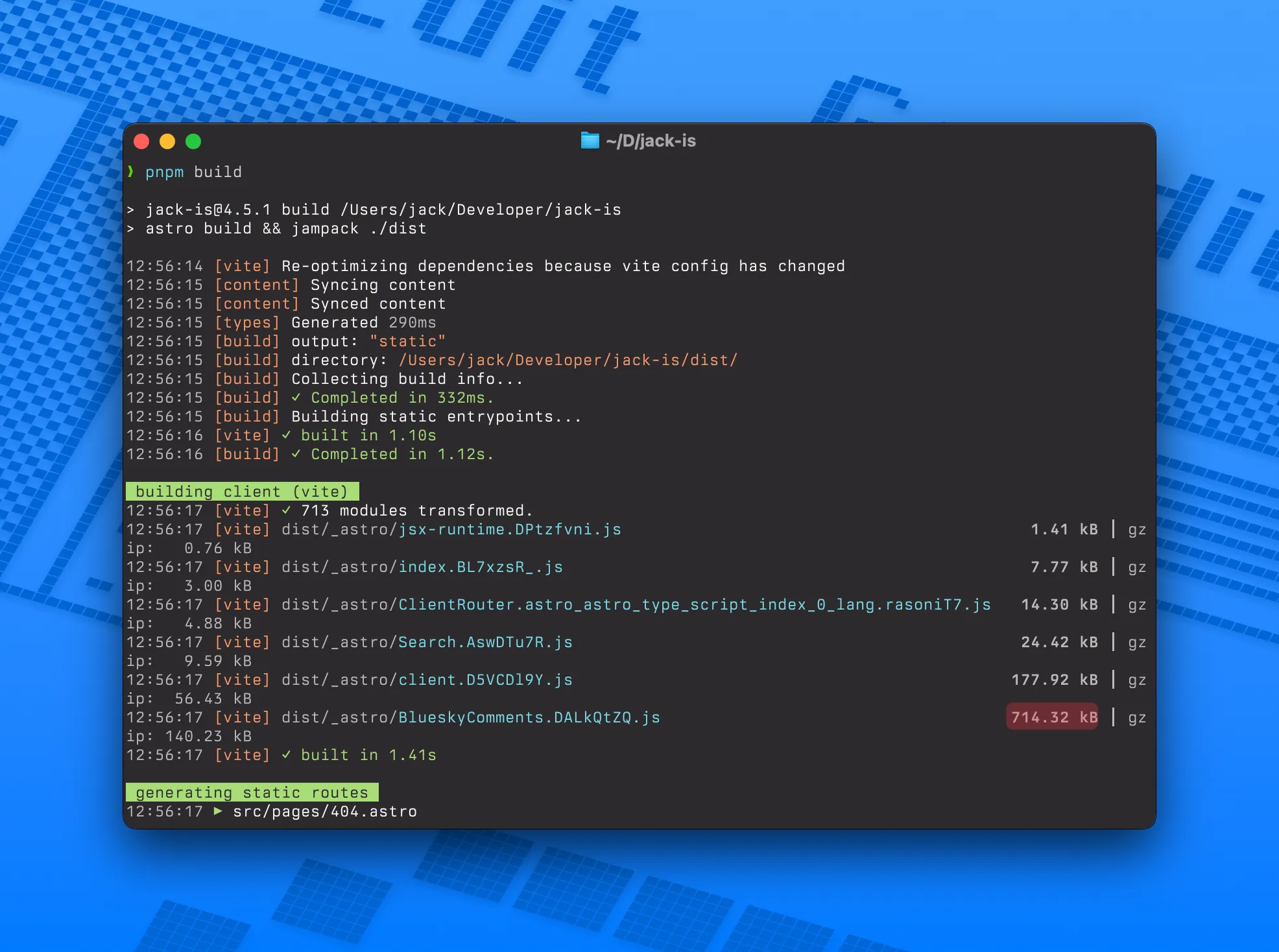Having comments on my blog with Bluesky is pretty nice, but what’s not so nice
is having to bring in the entire @atproto/api package. It seemingly can’t be
tree shaken down via Vite, so you end up with a massive JS file for comments.
How massive is it? More than 700kB.

It’s kinda a lot, and as it is I had to tweak my Astro config to make Vite not warn about this:
vite: { optimizeDeps: { exclude: ["@resvg/resvg-js"], }, build: { chunkSizeWarningLimit: 768, // TODO find a better way to handle this // where "this" means the bsky react import chunk size }, },I wasn’t a huge fan of this for a few reasons. One, that was a lot of unneeded JS being delivered that I didn’t need, and I had to modify a warning setting which seemed less than ideal.
I had seen @atcute/client by Mary float across my
feed, and poked at it a bit, but only after I figured out how to make unauthenticated
requests with it did it become clear how much better it was going to make my
bundles.
Only took a little bit of modifying the work I had done using Emily Liu’s example to instead use atcute:
const rpc = new XRPC({ handler: simpleFetchHandler({ service: "https://public.api.bsky.app" }),});
const agent = new Agent("https://public.api.bsky.app");const assembledUrl = "https://jack.is/posts/" + slug.toString();
const response = await agent.app.bsky.feed.searchPosts(...);const response = await rpc.get("app.bsky.feed.searchPosts", { params: { q: "📝", author: "did:plc:cwdkf4xxjpznceembuuspt3d", sort: "latest", limit: 1, url: assembledUrl, },});The unexpected benefit here is that @atproto/api didn’t actually have all the
helper functions Emily needed for it to work, so there was a direct call to one
of the xrpc endpoints. Now that everything just uses rpc.get, it’s a lot more
consistent and easier to follow.
I did have to add a few //@ts-expect-error sprinkled around, but they’re all
guarded by typeguards so I’m not too worried.
Now instead of 700kB, my BlueskyComments.js is only 10kB. A vast improvement.
Thanks again to Emily for posting their code to begin with, and Mary for an excellent suite of tooling that’s much more compact than the full ATProto API.